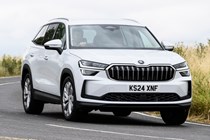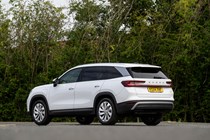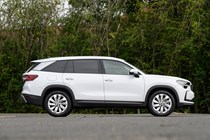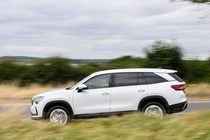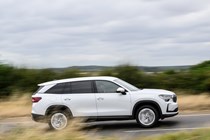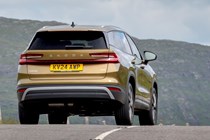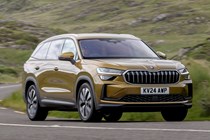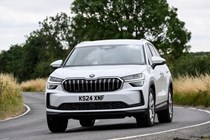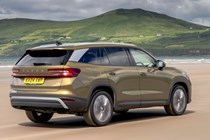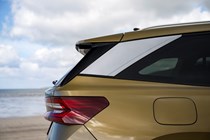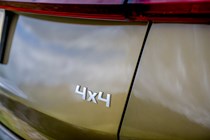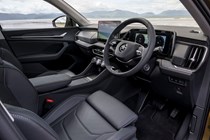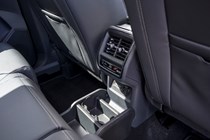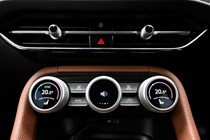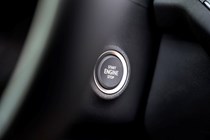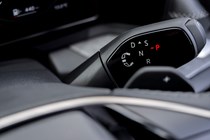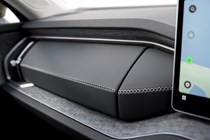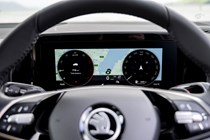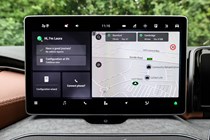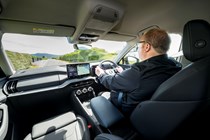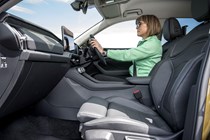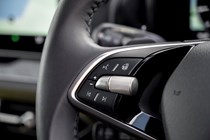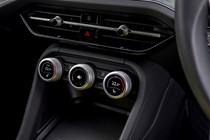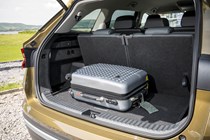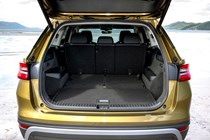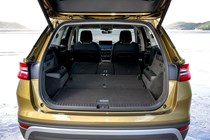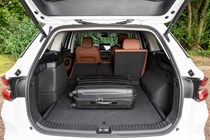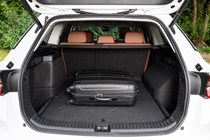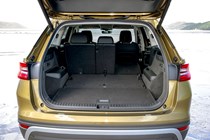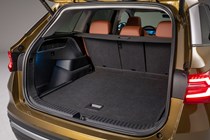
Skoda Kodiaq engines, drive and performance
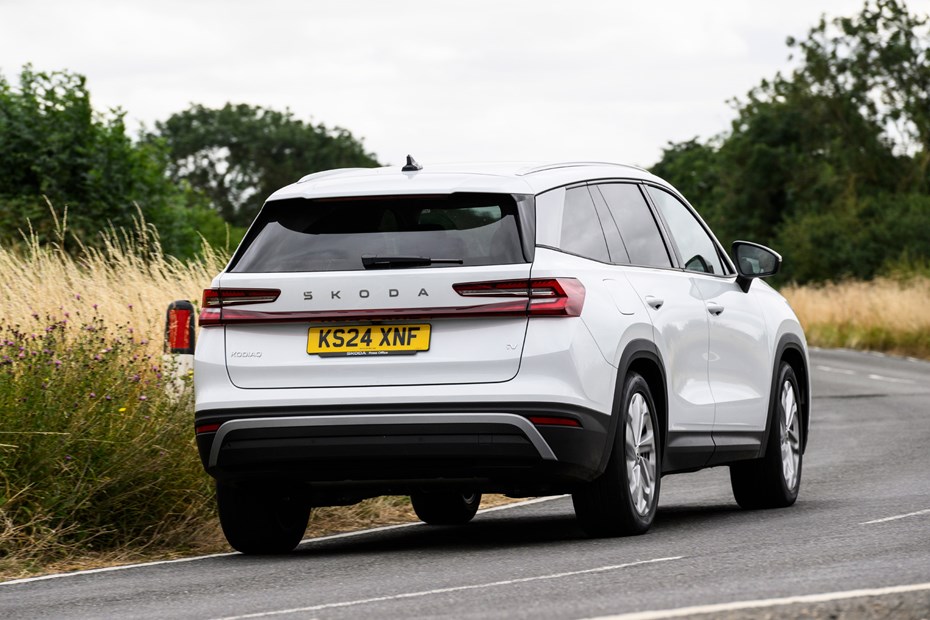
- Petrol, diesel and plug-in hybrids available
- Very refined and comfortable
- But not in any way engaging
Petrol engines
The Kodiaq’s engine line-up will expand over time, but for the time being there’s a choice of one petrol, two diesels and a plug-in hybrid. All are now paired to an automatic gearbox, with no manual versions available on this new model.

We’ll start with the petrol option, which is a 1.5-litre turbocharged mild-hybrid unit putting out 150hp and 250Nm of torque. It introduces fuel-saving mild-hybrid technology to the Kodiaq, and it’s very effective, which we’ll come onto later. As long as you’re not in too much of a hurry, performance is respectable, though it could struggle when fully laden with people and luggage – 0-62mph takes just under 10 seconds.
Diesel engines
While diesel engines might have fallen out of favour with many buyers, it’s still an important choice for buyers looking for a car like the Kodiaq. Not least for those looking for a great tow car, with the diesels able to tow up to 2,400kg, compared to 1,800kg for the petrol and plug-in hybrids.
The Volkswagen Group’s widely used 2.0-litre TDI diesel engine is present and available with either 150hp and 360Nm of torque or 193hp and 400Nm. The latter comes with four-wheel-drive as standard and is the only Kodiaq currently available with it. Accelerating to 60mph takes 9.8 seconds in the lesser-powered engine, or 8.0 seconds with the punchier motor.

If you do a lot of miles or are looking for a tow car, we think diesel remains the best choice for the Kodiaq.
Plug-in hybrid engines
New to the Kodiaq is a plug-in hybrid, which is also shared with the latest Skoda Superb. It’s one of the first cars to use this new Volkswagen Group setup, which pairs a 1.5-litre petrol engine with an electric motor for a combined 201bhp.
It uses a six-speed automatic (rather than the seven-speed unit the other engines get), and can accelerate from 0-60mph in 8.2 seconds, though never feels all that spritely and can struggle for grip if you get your foot down. That said, the transition between petrol and electric is smooth and the electric range is impressive, as we’ll explore in the efficiency section.
What’s it like to drive?
The Kodiaq is a car designed to offer maximum comfort over a sportier driving experience, and in that respect it excels.
Even on the larger 19-inch alloy wheels and doing away without the £1,000 adaptive suspension (something we don’t think the Kodiaq needs), it rides particularly well. Whether around town or on potholes surfaces, it handles its size and heft well, feeling supple enough but never overly soft to the point it can make passengers a bit nauseous.
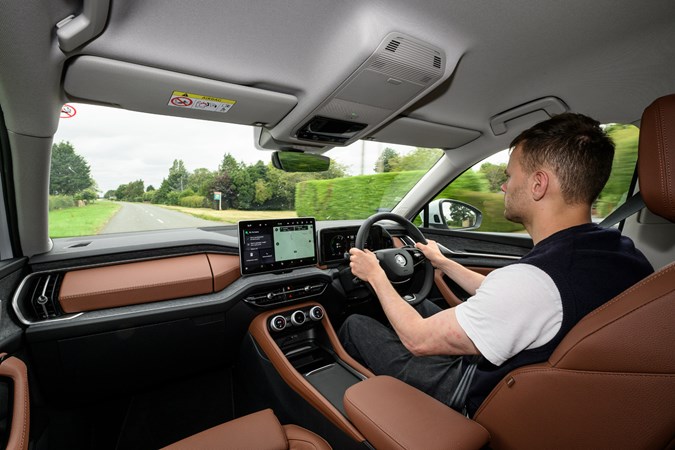
Except for the occasionally vocal engines (both petrol and diesel), refinement is excellent, with the Kodiaq feeling very quiet on the move with limited road and wind noise. You can choose an Acoustic Package that isolates noise further through different glass, but again the Kodiaq doesn’t need it and it’s money worth saving, or spending on other more useful options.
From a driver’s point of view, the Kodiaq is never engaging but family SUVs of this type rarely are, or need to be. That said, it feels planted on the move, with light but direct steering meaning you can go through faster flowing corners at a decent lick of pace, though with a bit of body roll to contend with. A sportier vRS model is likely on the way to liven things up, but it’s at a relaxing cruise or steadier pace where the Kodiaq feels better suited.


